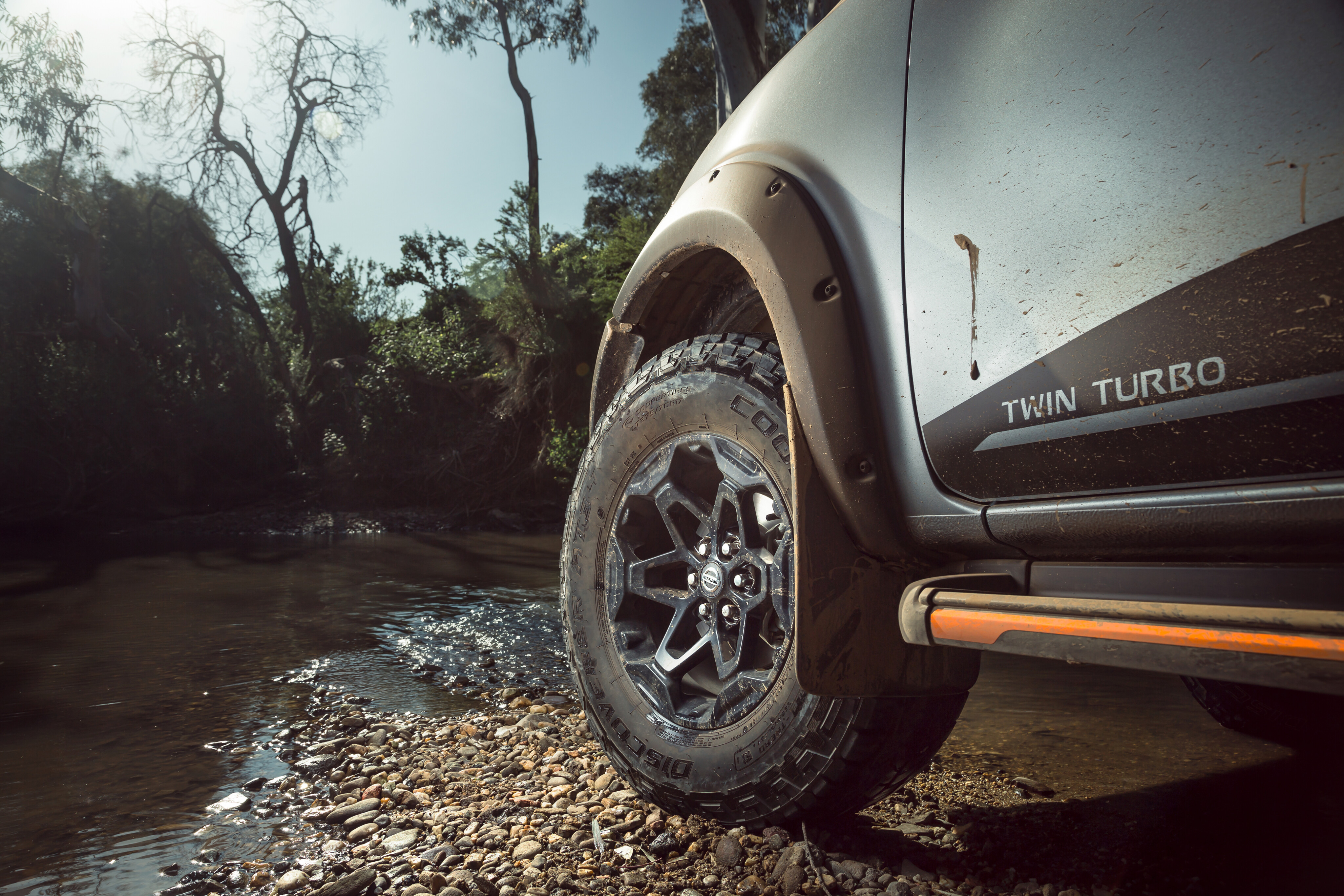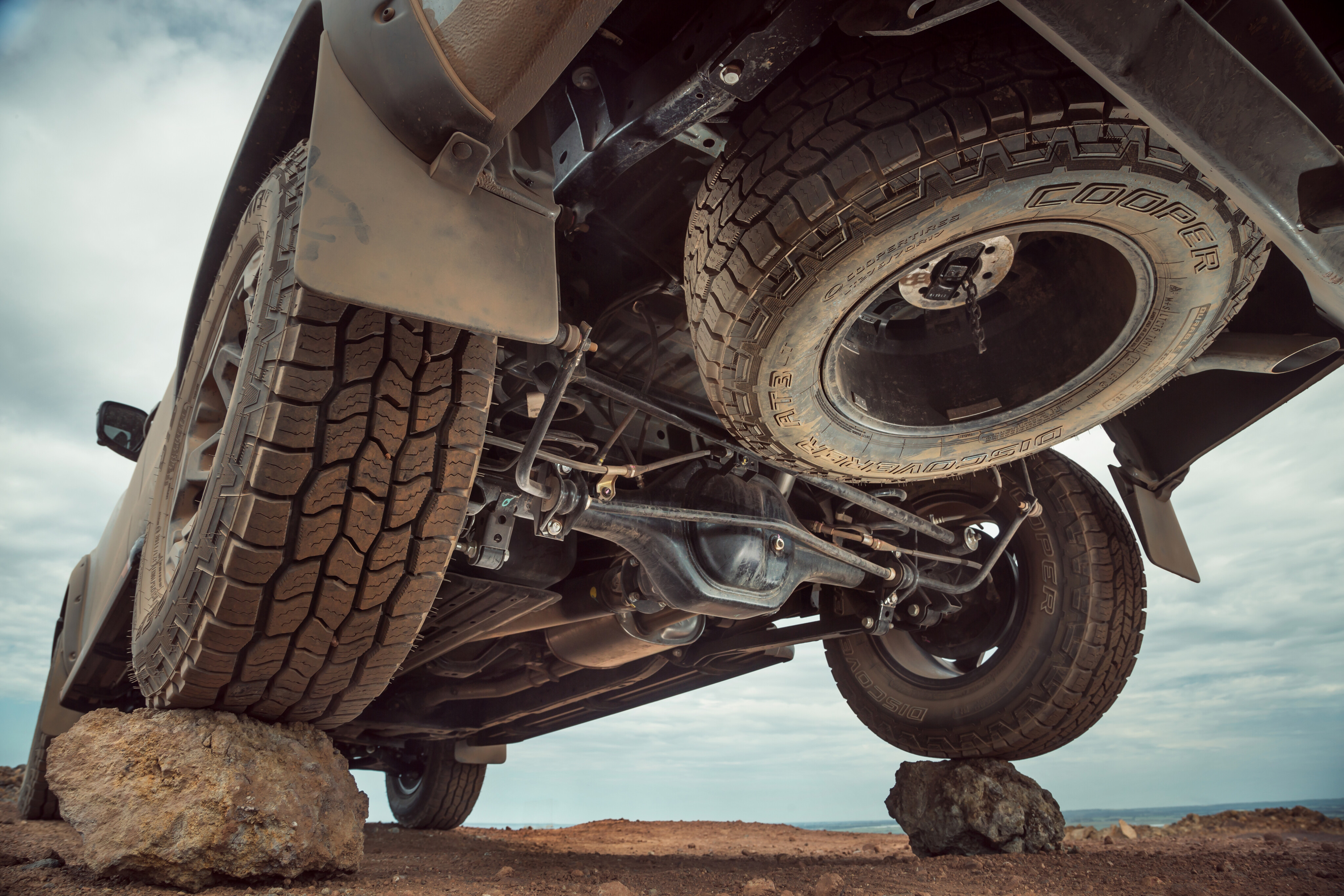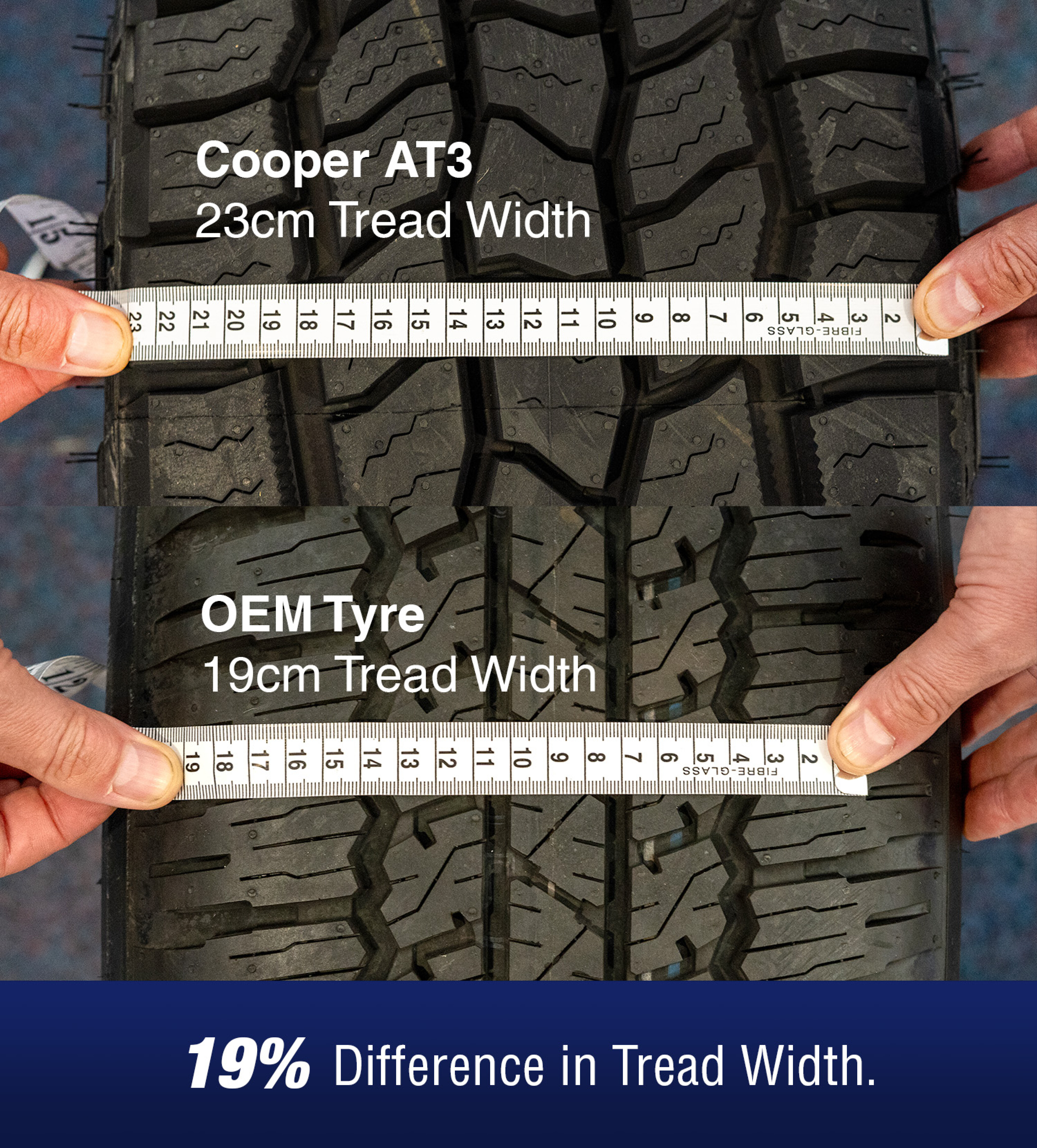
When it comes to selecting the right 4WD tyres, the number of options can seem overwhelming.
With different sizes, brands, patterns and applications, it can be difficult to know where to begin. The experts at Cooper Tires are on-hand to provide some helpful tips on how to decide on the right tyre for your 4WD.
The main point people need to consider when buying 4WD tyres is value for money. Is the money you’re spending giving you a 4WD tyre that will provide both traction and durability? Here are some tips to help determine whether you are getting the best value for money.

Just because tyres are the same size, it doesn’t mean they have the same tread width, tread depth and casing strength. As an example, Cooper has compared two premium 265/65R17 tyres throughout this article, to demonstrate what you should be looking for.
Ask the dealer about the tyre’s tread width. This is crucial as there can be significant variations between brands.
What is tread width?
Tread width refers to the width of the tyre's tread, which is the part of the tyre that makes contact with the road. It's measured from one sidewall to the other across the tread section of the tyre and it's important because it affects the tyre's grip on the road.
In the photo below, the tread width of the two tyres is different, with the Cooper AT3 measuring 230mm and the unnamed OEM tyre measuring 190mm – that’s a 19 per cent difference. Wider tyres have a larger contact patch for better handling and a wider steel belt under the tread which means less shoulder wear, a common problem when driving on winding roads in Australia.

What is tread depth?
A tyre's tread depth is essentially the distance between the top of the tread pattern to the bottom of the grooves in the tyre. It's just as important as tread width, as greater tread depth means more grip, mileage and more resistance to damage. Tyres with greater depth usually have a better casing, which is important when it comes to handling.
In the example given below, the tread depth of the Cooper AT3 tyre is 12.79mm while the unnamed OEM is 8.87mm – that’s a 36 per cent difference.

What is the load rating?
A load rating is the maximum weight a tyre can safely support. It's crucial for ensuring safety and performance by matching the tyre's capacity with the vehicle's requirements.
Not all tyres have the same strength casing, and the easiest way to tell is to check the load rating. The weaker tyre has a load rating of 112, which means it can carry 1120kg; while the stronger tyre has a load rating of 120kg, which means it can carry 1400kg. You can do a simple push test, to determine the casing strength of the tyre. A stronger tyre means less punctures and better handling when towing or carrying weight.
Three simple questions
When you plan on replacing your 4WD tyres, here are three simple questions to ask the dealer. This will help to compare the tyres you are looking to purchase, and which tyres offer the best value for money.
- What is the tread width?
- What is the tread depth?
- What is the load rating?
It’s also important to buy tyres from a qualified dealer, as not all stores that sell tyres are knowledgeable about them. After all, tyres are what keep you and your family safe both on and off the road.
Thanks to Cooper Tires for providing these tyre tips.

COMMENTS